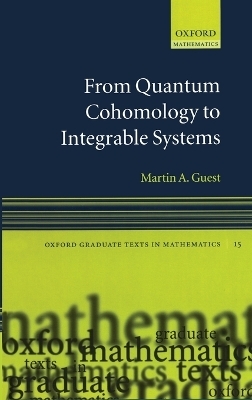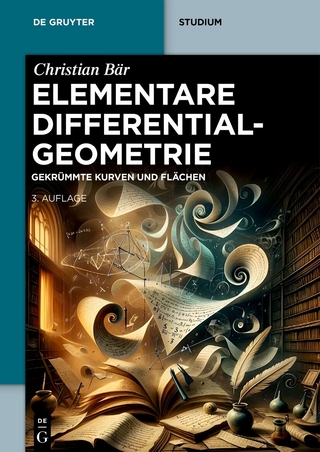
From Quantum Cohomology to Integrable Systems
Seiten
2008
Oxford University Press (Verlag)
978-0-19-856599-4 (ISBN)
Oxford University Press (Verlag)
978-0-19-856599-4 (ISBN)
This text focuses on the extraordinary success of quantum cohomology and its connections with many existing areas of traditional mathematics and new areas such as mirror symmetry. Aimed at graduate students in mathematics as well as theoretical physicists, the text assumes basic familiarity with differential equations and cohomology.
Quantum cohomology has its origins in symplectic geometry and algebraic geometry, but is deeply related to differential equations and integrable systems. This text explains what is behind the extraordinary success of quantum cohomology, leading to its connections with many existing areas of mathematics as well as its appearance in new areas such as mirror symmetry.
Certain kinds of differential equations (or D-modules) provide the key links between quantum cohomology and traditional mathematics; these links are the main focus of the book, and quantum cohomology and other integrable PDEs such as the KdV equation and the harmonic map equation are discussed within this unified framework.
Aimed at graduate students in mathematics who want to learn about quantum cohomology in a broad context, and theoretical physicists who are interested in the mathematical setting, the text assumes basic familiarity with differential equations and cohomology.
Quantum cohomology has its origins in symplectic geometry and algebraic geometry, but is deeply related to differential equations and integrable systems. This text explains what is behind the extraordinary success of quantum cohomology, leading to its connections with many existing areas of mathematics as well as its appearance in new areas such as mirror symmetry.
Certain kinds of differential equations (or D-modules) provide the key links between quantum cohomology and traditional mathematics; these links are the main focus of the book, and quantum cohomology and other integrable PDEs such as the KdV equation and the harmonic map equation are discussed within this unified framework.
Aimed at graduate students in mathematics who want to learn about quantum cohomology in a broad context, and theoretical physicists who are interested in the mathematical setting, the text assumes basic familiarity with differential equations and cohomology.
1. The many faces of cohomology ; 2. Quantum cohomology ; 3. Quantum differential equations ; 4. Linear differential equations in general ; 5. The quantum D-module ; 6. Abstract quantum cohomology ; 7. Integrable systems ; 8. Solving integrable systems ; 9. Quantum cohomology as an integrable system ; 10. Integrable systems and quantum cohomology ; References
| Erscheint lt. Verlag | 13.3.2008 |
|---|---|
| Reihe/Serie | Oxford Graduate Texts in Mathematics ; 15 |
| Verlagsort | Oxford |
| Sprache | englisch |
| Maße | 164 x 242 mm |
| Gewicht | 646 g |
| Themenwelt | Mathematik / Informatik ► Mathematik ► Geometrie / Topologie |
| ISBN-10 | 0-19-856599-2 / 0198565992 |
| ISBN-13 | 978-0-19-856599-4 / 9780198565994 |
| Zustand | Neuware |
| Haben Sie eine Frage zum Produkt? |
Mehr entdecken
aus dem Bereich
aus dem Bereich
Gekrümmte Kurven und Flächen
Buch | Softcover (2024)
De Gruyter (Verlag)
54,95 €
Nielsen Methods, Covering Spaces, and Hyperbolic Groups
Buch | Softcover (2024)
De Gruyter (Verlag)
109,95 €


